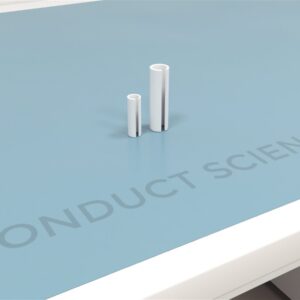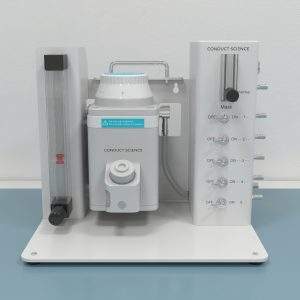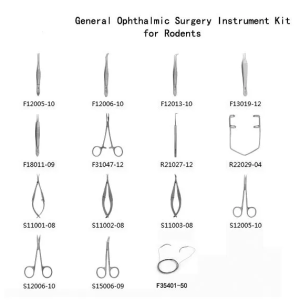$1,590.00

MazeEngineers empowers preclinical neuroscience research with meticulously designed, customizable behavioral apparatuses. From manual classic mazes to fully automated smart systems, we provide the tools scientists need to capture high-quality, reproducible data for studies on learning, memory, anxiety, and depression.



bool(false)
Features |
Length: 52 cm |
Width: 17cm |
Height: 23cm |
Middle section width : 8.5cm |
Comes with 4 Dividers |
(2) 8 Hole pattern |
(2) Solid Clear Acrylic |

Zebrafish conditioned place preference (CPP) is a popular method for evaluating the rewarding effects of various food substances and psychoactive compounds. This task assesses the positive-reinforcing effects by measuring the zebrafish’s preference for an environment that was previously associated with a particular substance.
The CPP paradigm leverages the zebrafish’s natural preference for black over white. In this assay, the primary stimulus acts as an unconditioned stimulus. When paired with a secondary stimulus (a visual cue) that functions as a conditioned stimulus, it induces an approach behavior towards the paired environment (Darland & Dowling, 2001).
The CPP procedure is typically divided into three phases. In Phase I, zebrafish can explore all compartments of the CPP tank freely, and the time spent in each compartment is recorded to establish a baseline preference. In Phase II, the fish are confined to each compartment and receive either the experimental or control treatment for a set period. During Phase III, zebrafish are again allowed to move freely between compartments, and the time spent in each is recorded to determine their final preference. CPP behavior is quantitatively assessed by subtracting the baseline preference recorded in Phase I from the final preference observed in Phase III.
Quantitative measure of CPP behavior = (Final place preference – Baseline place preference).
A significant shift towards the compartment conditioned with the experimental treatment indicates that the treatment is rewarding (Mathur et al., 2011).
Darland and Dowling were the trailblazers in developing the CPP behavior model for adult zebrafish (Darland & Dowling, 2001). They created an apparatus specifically to assess the addictive properties of various compounds. In their study, they initially recorded the baseline place preference, then confined the zebrafish to their least preferred compartment while exposing them to cocaine, and finally assessed the change in place preference to determine the effects.
The apparatus comprises a Plexiglas CPP tank measuring approximately 52 cm in length, 17 cm in width, and 22 cm in height. It is divided by two opaque barriers—one solid and one perforated—creating a central alley for the zebrafish to enter. To prevent the fish from seeing the experimenter, the tank is housed inside a brown box. Various floor patterns can be used as visual cues, with the most effective method being to place patterned sheets beneath the apparatus.
The fish’s movements within the CPP tank can be monitored using Noldus EthoVision XT, which is positioned on an overhead rack above the tank. The floor patterns should provide sufficient contrast to ensure consistent tracking by the Noldus EthoVision XT without any obstructions.
The CPP paradigm aims to assess the reinforcing effects of substances in zebrafish by comparing baseline and final place preference behavior between a vehicle-treated control group and a disease model or intervention group.
The water temperature is maintained at around 28°C, and the zebrafish are kept on a 10-14 hour light/dark cycle. Initially housed in groups within tanks with recirculating distilled water, the subjects are moved to individual tanks a few days before testing. The testing room must be soundproof.
Proper illumination is crucial for the subjects to distinguish patterns and ensure consistent tracking. Continuous white noise from a fan should be provided throughout the test. To minimize the impact of vibrations, experimental tables should be covered with foam boards that act as shock absorbers.
The testing procedure spans two days. On Day 1, the baseline preference (Phase I) and the first conditioning (Phase II) are evaluated.
To begin, subjects are gently introduced into the central alley using a fishnet and allowed to explore for 2 minutes. The dividers are then removed, permitting the subjects to explore all tank compartments for 5 minutes. During this time, the baseline place preference for the white and dotted patterns is recorded.
Following Phase I, subjects showing a preference for the white compartment are divided into two groups: one receiving vehicle treatment and the other receiving the experimental treatment. The same grouping is applied to subjects that preferred the dotted environment.
Four CPP tanks are set up side by side on the experimental table, each monitored by a Noldus EthoVision XT system placed on overhead racks. Two tanks contain system water, while the other two contain system water with the compound under study at an appropriate concentration.
Subjects are then placed into their least preferred compartment with exposure to the substance and allowed to swim freely for 20 minutes. After this period, the subjects are transferred to transit tanks to rinse off the substance. Subsequently, they are placed in their preferred compartment with system water for another 20 minutes. Vehicle-treated subjects are exposed to both the preferred and least preferred compartments.
On Day 2, approximately 16 hours after Phase II (allowing sufficient time for compound clearance), the subjects’ final preference for either the white or dotted environment is evaluated.
The original CPP tank for zebrafish was created by Darland and Dowling. Their design featured a tank divided into two distinct compartments with visual cues: one with a white pattern and the other with a dotted pattern. Since then, various modifications have been made to the CPP paradigm, including changes to the floor and tank patterns.
Ninkovic et al. examined the reinforcing effects of substances using a CPP tank. Their setup included two chambers with distinct compartments, one colored brown and the other white, and the tank floor featured two black circles.
Kily et al. investigated the effects of different substances with the CPP task by modifying the apparatus to include two chambers: one side with black spots and the other with alternating black and white stripes.
Mathur et al. used the CPP model to study the effects of several compounds. In their design, the tank was divided into white and dotted halves by an approximately 8 cm wide central alley. The dotted compartment featured a uniform pattern of 16 blue dots, each about 2 cm in diameter.

The sample data illustrates the correlation between ethanol concentration and the change in preference percentage in zebrafish. The graph clearly shows that as the ethanol concentration in the CPP tank increases, the zebrafish spend more time in the conditioned compartment.
The CPP task is an ideal model for screening; identifying substances with reinforcing or aversive characteristics. It also helps to isolate mutants with altered responses.
A large number of compounds can be effectively evaluated in a reasonable time span making CPP the most likely choice for initial screening of rewarding compounds.
Besides the advantages, finding the exact concentration of a substance can be time-consuming because of the ultra-narrow therapeutic window of substances in zebrafish. (Bevins, R, 2005)
The design of CPP tank is critical, and the experimenter should ensure that the subjects are not biased toward any compartment.
Due to the wide variety of floor patterns, we do not provide these. Typically, the apparatus is placed on top of a printed sheet of plastic covered paper to allow for waterproof wide ranging patterns at low cost.
Yes, we are happy to provide floor patterns, custom made on request. Please inquire for more details.
Yes the dividers can be removed and reslotted. We provide 4 inserts, 2 with hole patterns and 2 without so that you can retain the zebrafish in the middle area or allow the zebrafish choice preference.
There are no questions yet. Be the first to ask a question about this product.